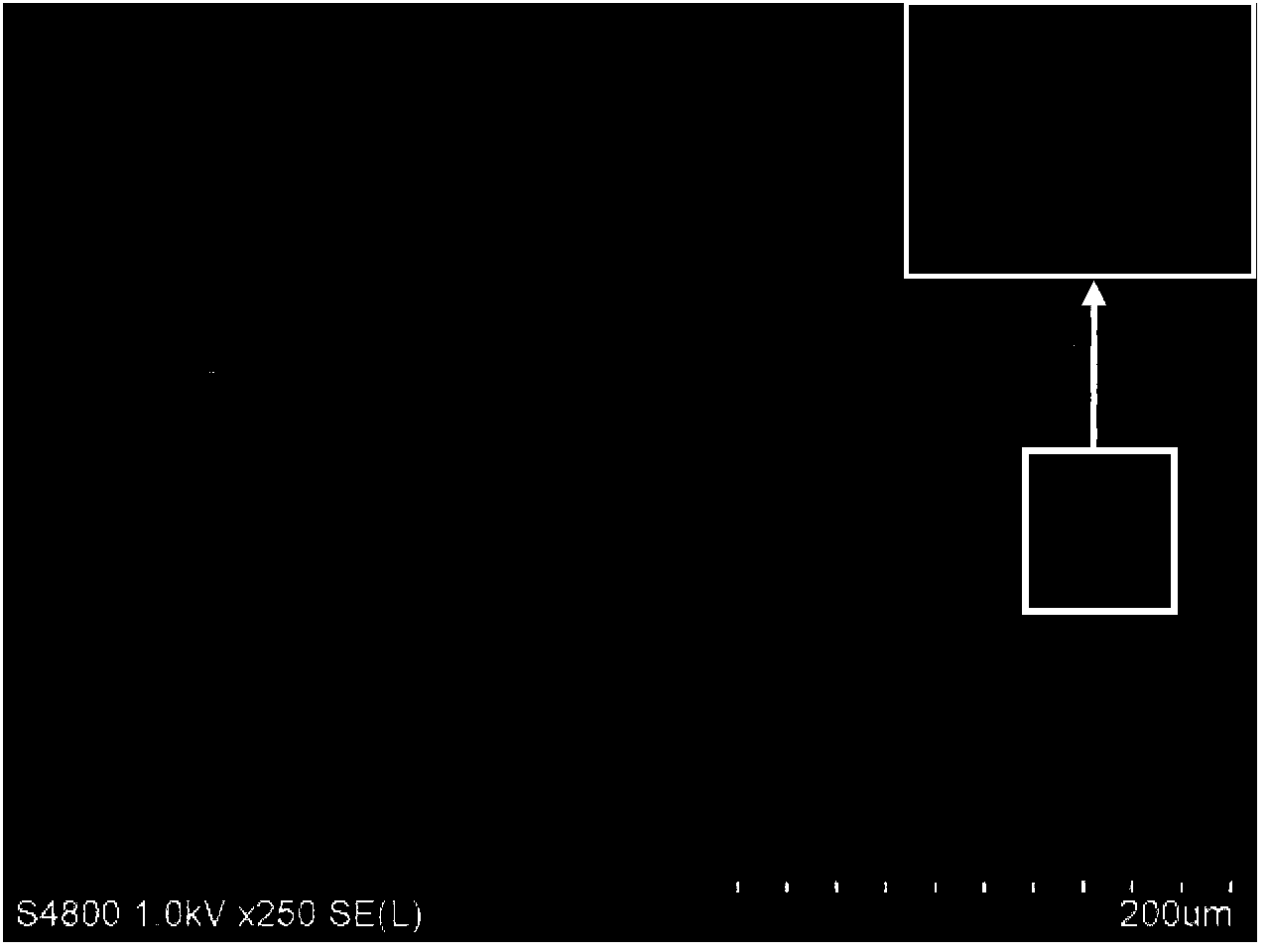Method for preparing silicon carbide reinforced carbon cloth based composite friction material
A composite friction material and silicon carbide technology, which is applied in the field of preparation of silicon carbide reinforced carbon cloth-based composite friction materials, can solve problems such as brake failure and reduced performance, and achieve improved friction performance, uniform coating, and reduced temperature. Effect
- Summary
- Abstract
- Description
- Claims
- Application Information
AI Technical Summary
Problems solved by technology
Method used
Image
Examples
Embodiment 1
[0023] Step 1: Take 1.5g of 2123 phenolic resin and dissolve it in 150ml of absolute ethanol to obtain a phenolic resin solution. After the phenolic resin is fully dissolved, let it stand for 22 hours, seal it and store it to obtain a solution;
[0024] Step 2: Cut the PAN-based carbon cloth into 2cm×2cm squares, place it in an acetone solution for ultrasonic cleaning for 8 minutes, then dry it in an oven at 60°C, and put the dried carbon cloth into A solution for ultrasonic impregnation After 5 minutes, take it out and set aside;
[0025] Step 3: Take 0.3g of 300-mesh silicon powder, use ethylene glycol as a dispersant, disperse the silicon powder in 100ml of ethylene glycol and magnetically stir for 6 hours to obtain B suspension;
[0026] Step 4: Pour the B suspension into the four-necked flask of the UVave-1000 microwave ultraviolet ultrasonic synthesizer, and soak the carbon cloth obtained in Step 2 in the B suspension;
[0027] Step 5: Turn on the UVave‐1000 microwave u...
Embodiment 2
[0029] Step 1: Take 1.5g of 2123 phenolic resin and dissolve it in 150ml of absolute ethanol to obtain a phenolic resin solution. After the phenolic resin is fully dissolved, let it stand for 26 hours, seal it and store it to obtain a solution;
[0030] Step 2: Cut the PAN-based carbon cloth into a 2cm×2cm square, place it in an acetone solution for ultrasonic cleaning for 10 minutes, dry it in an oven at 80°C, and put the dried carbon cloth into A solution for ultrasonic impregnation After 10 minutes, take it out and set aside;
[0031] Step 3: Take 0.5g of 300-mesh silicon powder, use ethylene glycol as a dispersant, disperse the silicon powder in 100ml of ethylene glycol and magnetically stir for 8 hours to obtain B suspension;
[0032] Step 4: Pour the B suspension into the four-necked flask of the UVave-1000 microwave ultraviolet ultrasonic synthesizer, and soak the carbon cloth obtained in Step 2 in the B suspension;
[0033] Step 5: Turn on the UVave‐1000 microwave ult...
Embodiment 3
[0036] Step 1: Take 2.25g of 2123 phenolic resin and dissolve it in 150ml of absolute ethanol to obtain a phenolic resin solution. After the phenolic resin is fully dissolved, let it stand for 28 hours, seal it and store it to obtain a solution;
[0037] Step 2: Cut the PAN-based carbon cloth into a 2cm×2cm square, place it in an acetone solution for ultrasonic cleaning for 12 minutes, then dry it in an oven at 90°C, and put the dried carbon cloth into A solution for ultrasonic impregnation After 20 minutes, take it out and set aside;
[0038] Step 3: Take 0.8g of 300-mesh silicon powder, use ethylene glycol as a dispersant, disperse the silicon powder in 100ml of ethylene glycol and magnetically stir for 10 hours to obtain B suspension;
[0039]Step 4: Pour the B suspension into the four-necked flask of the UVave-1000 microwave ultraviolet ultrasonic synthesizer, and soak the carbon cloth obtained in Step 2 in the B suspension;
[0040] Step 5: Turn on the UVave‐1000 microwa...
PUM
| Property | Measurement | Unit |
|---|---|---|
| friction coefficient | aaaaa | aaaaa |
| dispersion coefficient | aaaaa | aaaaa |
Abstract
Description
Claims
Application Information
 Login to View More
Login to View More - R&D
- Intellectual Property
- Life Sciences
- Materials
- Tech Scout
- Unparalleled Data Quality
- Higher Quality Content
- 60% Fewer Hallucinations
Browse by: Latest US Patents, China's latest patents, Technical Efficacy Thesaurus, Application Domain, Technology Topic, Popular Technical Reports.
© 2025 PatSnap. All rights reserved.Legal|Privacy policy|Modern Slavery Act Transparency Statement|Sitemap|About US| Contact US: help@patsnap.com

